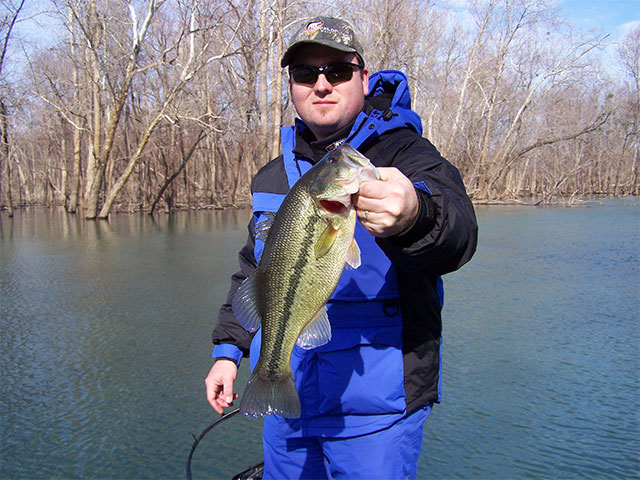Kentuckys Natural Symbols Kentucky Bass
Kentucky Bass
Kentucky (spotted) bass (Micropterus punctulatus) designated the state fish in 1956 by a joint resolution of the General Assembly. One of four black bass species found in Kentucky waters, the Kentucky bass is primarily a stream fish.
Although Rafinesque, a naturalist who worked with Audubon classifying wildlife in Kentucky, wrote the original description of Kentucky bass in 1819, it was not until the redescriprion by Carl L. Hubbs in 1927 that this fish was accepted as a separate and distinct species by ichthyologists. Rafinesque's work was disregarded because his description was brief and uncritical, and perhaps because the man himself was eccentric.
Similarities among the three major black bass species sometimes confuses anglers. Kentucky bass and smallmouth bass have similar body proportions while Kentucky bass share similar coloration with largemouth bass.
The term "spotted" is used to describe numerous scales with dark bases which appear as small spots on the lower sides of a Kentucky bass. Olive and dark green patches along both sides run together creating the appearance of an irregular, length-wise stripe. Irregular patches of dark green appear above the stripe, and the greenish body becomes paler toward the belly which is pearl white. This member of the sunfish family has a moderate size mouth and a prominent protruding jaw. The tip of the upper jaw is just below the eye. But its most distinguishing feature is a rough patch of "teeth" on the tongue. The patch is easily felt by rubbing a finger over the tongue.
Kentucky bass prefer large pools and flowing streams with moderate current. Living in and around structures on the bottom, these fish wait in hiding for unsuspecting prey. Diet includes shad, minnows, bluegill, small bass, crayfish, nightcrawlers, insect larvae, small snakes, frogs and bugs.
Prior to spawning, Kentucky bass move upstream into shallow water or coves where nests are built by the male. He fans the bottom with his tail creating a saucer-like depression measuring between one and two and one-half feet wide. The male then drives the female to the nest where she deposits her eggs. Four-year-old females produce between 4,000 and 5,000 eggs per pound of body weight.
When mature, most Kentucky bass attain lengths between eight and 15 inches and weigh anywhere from eight ounces to two pounds -- but there are exceptions. In 1970, Albert E. Sellers, Louisville, caught a seven-pound, 10-ounce Kentucky bass in Nelson County. Sellers' catch, which held world record status for 10 years, remains Kentucky's state record.
The natural fighting ability of the Kentucky bass makes it an excellent game fish, and its trout like flavor provides an excellent meal.
New Fish in Old Ponds
Pop and the Trading Stamp Special


